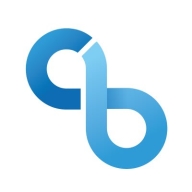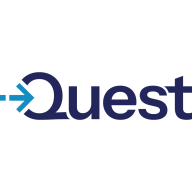

Quest KACE Systems Management Appliance and CloudBees compete in the IT management and DevOps categories. CloudBees appears to have an edge with its strong CI/CD capabilities and wide integration options.
Features: Quest KACE Systems Management Appliance shines with robust integration capabilities, particularly with Bomgar and ServiceNow for efficient asset management and software deployment. It allows remote imaging and endpoint management that simplifies previously manual tasks. CloudBees excels in advanced CI/CD capabilities, offering scalability and security features. It provides a single pane of glass for visibility across deployment processes and integrates extensively with various tools.
Room for Improvement: Quest KACE users encounter scalability issues in large environments, with requests for better application updates and patch management. The interface could be more intuitive for technical tasks. CloudBees needs to improve its license usage tracking and log management. Plugin updates and reducing operation times for handling multiple pipelines could enhance user experience, with easier code interactions also desirable.
Ease of Deployment and Customer Service: Quest KACE is advantageous for on-premises setups, with hybrid deployment options, and is backed by highly rated customer support. CloudBees is suited for cloud environments, supporting both public and private cloud deployments. Its customer service is responsive, although setting it up requires cloud infrastructure knowledge.
Pricing and ROI: Quest KACE offers competitive pricing, particularly beneficial for organizations with numerous endpoints, with a model that leads to labor savings and quick ROI through efficiency. CloudBees is considered expensive but offers value, particularly for enterprises focused on CI/CD processes, though its licensing details are not widely understood by users.
The return on investment is seen in the quick access to information, good inventory management, and efficient systems management.
I would rate the customer support for Quest KACE Systems Management Appliance (SMA) as a 10.
The customer service is very good, providing quick customer support in Spanish.
We have outgrown the size of one KACE appliance and are now running two.
The product is very scalable as it supports 10,000 thousand endpoints with just one appliance.
Currently, we have to go into each org to deploy applications when we need them all across the university.
The user interface needs improvement as customers have mentioned they do not like the interface since it is not an SMA-based interface.
The pricing is in the middle range of the market, not too expensive but not the cheapest either.
My experience with pricing, setup cost, and licensing for Quest KACE Systems Management Appliance (SMA) is that, hands down, it beat all of the others in simplicity and pricing.
Scripting has saved us hundreds of hours over the years when patching these vulnerabilities compared to how we did it before.
The most valuable features include simplicity, which makes systems management easier and faster, especially for device management.
| Product | Market Share (%) |
|---|---|
| CloudBees | 2.7% |
| Snyk | 23.5% |
| Checkmarx One | 15.5% |
| Other | 58.3% |
| Product | Market Share (%) |
|---|---|
| KACE Systems Management Appliance (SMA) | 1.0% |
| Kaseya VSA | 18.2% |
| NinjaOne | 13.7% |
| Other | 67.1% |


| Company Size | Count |
|---|---|
| Small Business | 1 |
| Midsize Enterprise | 3 |
| Large Enterprise | 17 |
| Company Size | Count |
|---|---|
| Small Business | 8 |
| Midsize Enterprise | 20 |
| Large Enterprise | 15 |
CloudBees provides a highly scalable and secure platform that supports seamless integration and automation across multiple environments. It excels in managing Jenkins instances and offers flexible deployment options, enhancing efficiency for large teams.
CloudBees is recognized for its integration with Jenkins, SonarQube, and Ansible, allowing companies to leverage its robust automation capabilities for continuous integration and deployment. With its strong support for Docker and Kubernetes, teams benefit from streamlined code management and operational efficiency. Its scalable architecture, real-time feedback, and premium vendor support help manage large-scale applications and microservices. Despite its strengths, users report challenges with pipeline setup, service availability, and GUI accessibility, which suggest room for improvement in these areas.
What are the key features of CloudBees?In tech and software industries, companies implement CloudBees for managing complex CI/CD pipelines. Its integration with DevOps tools facilitates automation and workflow optimization. Industries with large teams managing thousands of microservices use CloudBees to maintain high availability, streamline processes, and ensure security compliance, driving efficient production workflows.
KACE Systems Management Appliance offers integration capabilities, efficient image deployment, and comprehensive asset management. It supports centralized management across diverse devices and locations, simplifying IT processes and enhancing security.
KACE Systems Management Appliance provides single-pane visibility for endpoint management, mass software deployment, automated patch management, robust scripting, and detailed inventory tracking. It streamlines IT management and improves cyber-security compliance through remote software updates and centralized IT request handling. Despite struggles with scalability and the need for interface improvements, it enables efficient device imaging, script automation, and network management through detailed reporting. Organizations find it effective for software deployment, asset management, and endpoint monitoring, serving thousands of IoT devices and desktops.
What are the key features of KACE Systems Management Appliance?In healthcare, KACE Systems Management Appliance is used for maintaining device compliance and security standards. Educational institutions benefit from its capabilities to manage large numbers of endpoints across campuses. In finance, it aids in strict compliance requirements through automated patch management and detailed reporting. Retail sectors leverage its asset management features to streamline operations across numerous locations.
We monitor all DevSecOps reviews to prevent fraudulent reviews and keep review quality high. We do not post reviews by company employees or direct competitors. We validate each review for authenticity via cross-reference with LinkedIn, and personal follow-up with the reviewer when necessary.